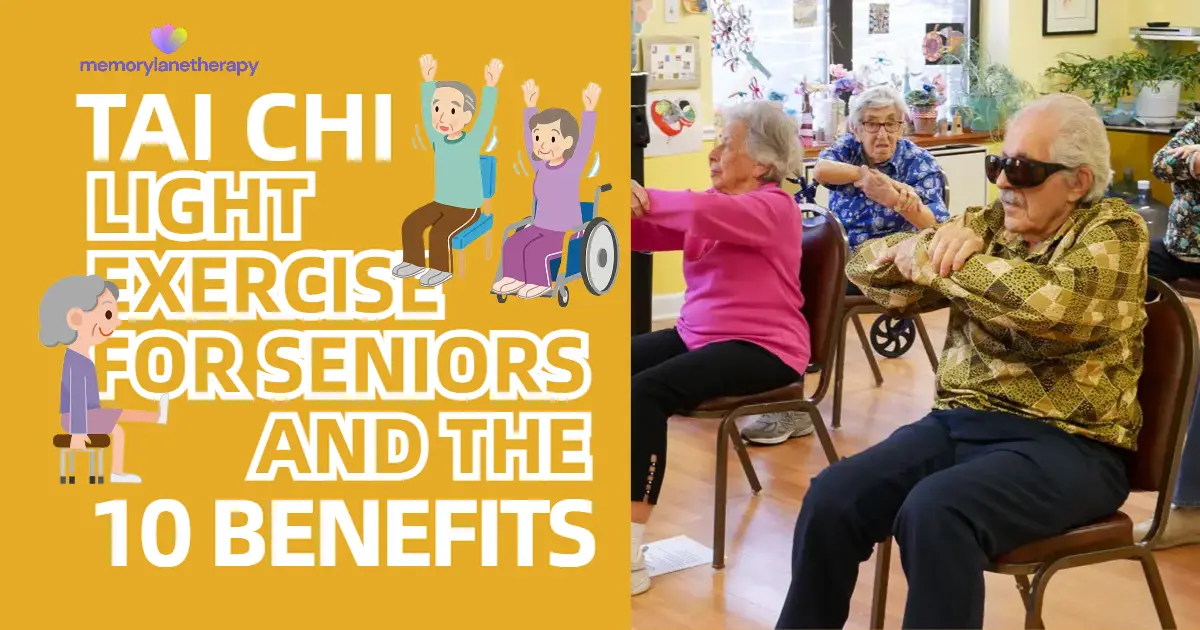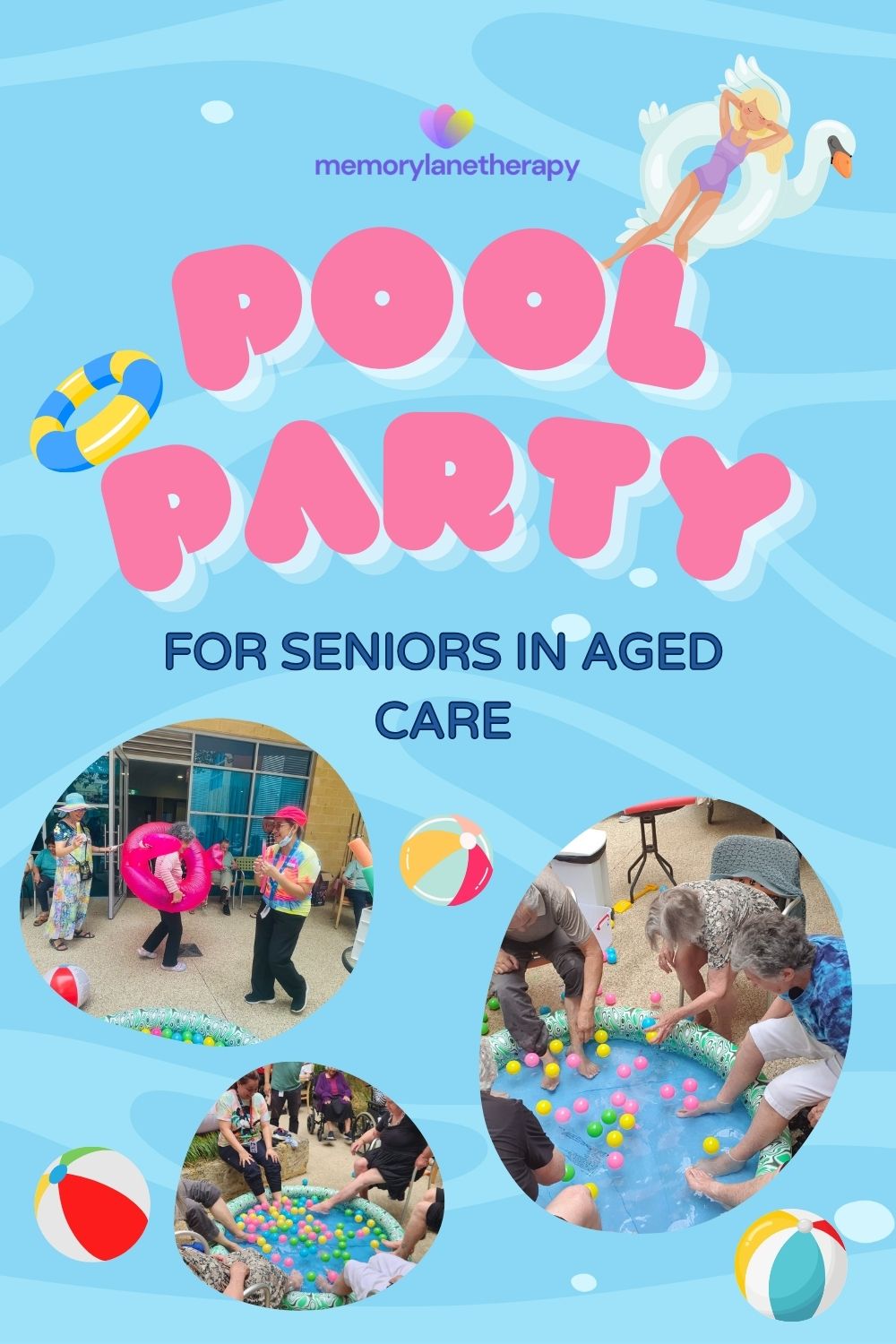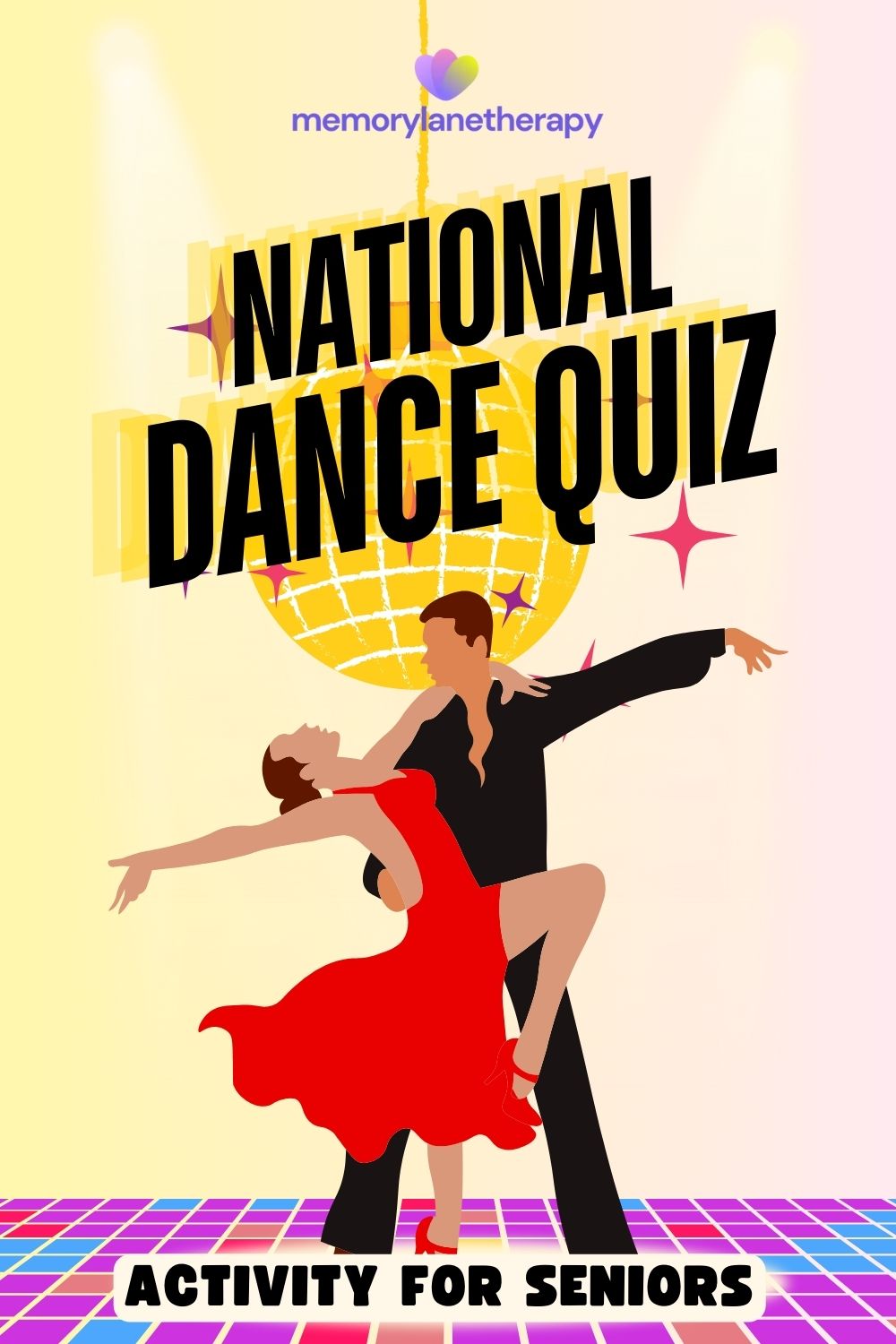Are you looking for a gentle and relaxing exercise activity for the seniors in your aged care facility? Look no further than Tai Chi! This ancient Chinese practice has been proven to promote balance, flexibility, and mental clarity, making it an ideal light exercise for seniors. In this article, we’ll dive through Tai Chi Light Exercise for Seniors and 10 of its Benefits!
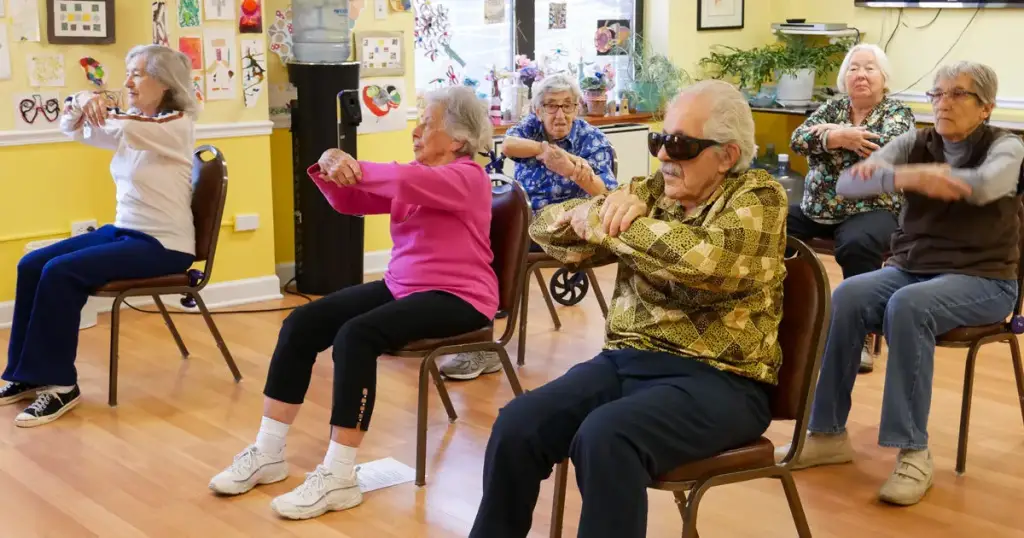
Setting Up the Tai Chi Light Exercise Group
Before we begin, let’s create a comfortable space for everyone. We’ll arrange chairs in a circle, ensuring there’s ample room for participants to move freely, whether they prefer to remain seated, use a wheelchair, or stand comfortably. Tai Chi is incredibly adaptable, so feel free to participate at your own level. To enhance the calming atmosphere, we’ll be playing gentle music that complements the mindful movements of Tai Chi.

Starting the Tai Chi Light Exercise Session
Begin the Tai Chi group with deep breathing exercises and gentle stretching to help participants relax and prepare their bodies for the movements to come. Stand in the center or in front of the group, ensuring everyone has a clear view to follow your lead. Introduce simple Tai Chi movements, and if the group enjoys a particular sequence, feel free to repeat it a few times, allowing them to immerse themselves in the flow.
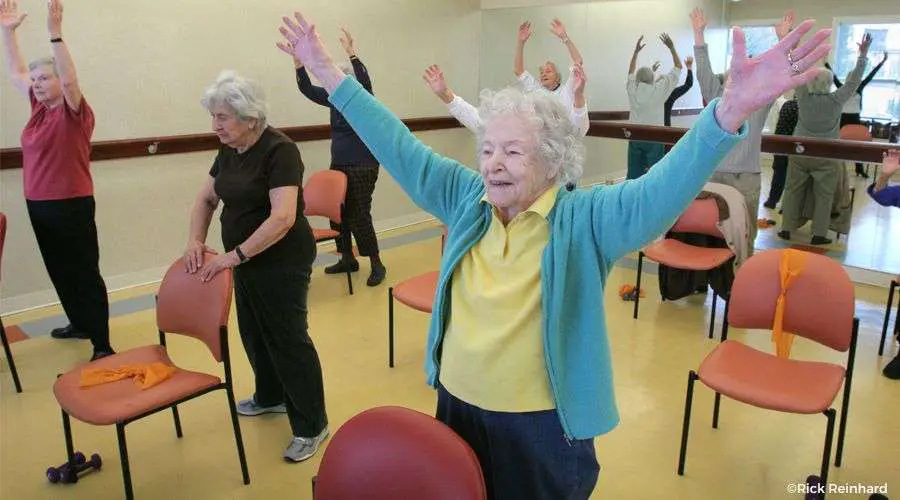
Using a Chair for Support
Chairs become magical helpers in our Tai Chi sessions, making this ancient practice accessible and enjoyable for all. Whether you prefer to stand or need extra support, a chair is there for you. For those who wish to stand, the chair provides a steady anchor, boosting confidence and reducing the fear of losing balance. And for those who find standing challenging, the seated version ensures you can comfortably participate and reap the many rewards of Tai Chi.
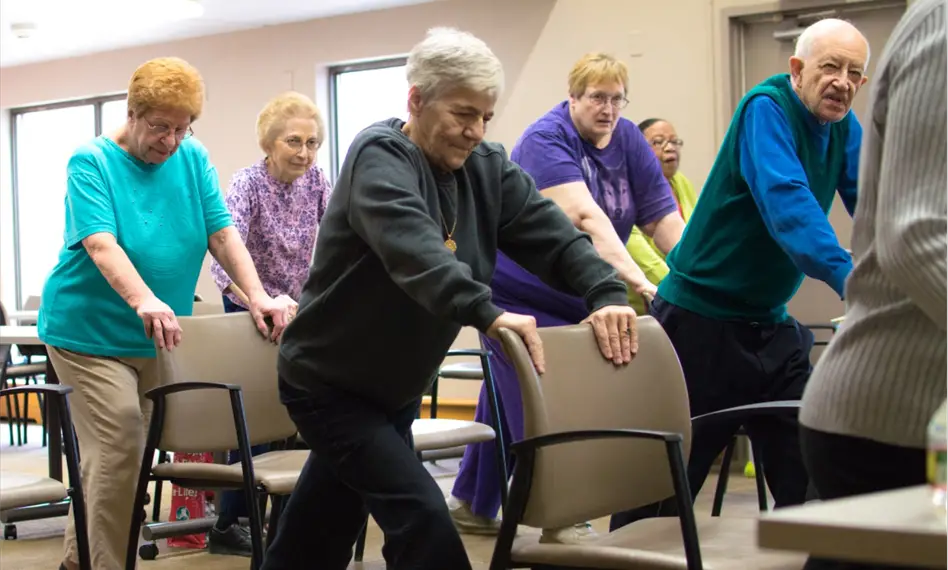
No matter your ability, the chair allows you to move gracefully at your own pace, promoting relaxation, improved balance, and overall well-being. This inclusive approach empowers everyone to experience the serenity, self-discovery, and health benefits of Tai Chi.
The 10 Benefits of Tai Chi for Seniors
ai Chi isn’t just graceful movement; it’s a treasure trove of benefits for active seniors! Here’s how:
- Stay Steady on Your Feet. Tai Chi’s slow, controlled movements improve balance and stability, reducing falls and boosting confidence for daily activities.
- Move with More Ease. Gentle stretches and flowing motions in Tai Chi help you maintain and improve flexibility, keeping your movements smooth and pain-free.
- A Healthier Heart. Regular Tai Chi practice can improve cardiovascular function, supporting heart health and lowering the risk of heart problems.
- Joint-Friendly Exercise. The low-impact nature of Tai Chi is perfect for seniors with arthritis or joint pain, allowing you to exercise comfortably.
- Stress Less, Live More. Tai Chi’s calming effects help reduce stress, which strengthens your immune system and supports overall health.
- Sharpen Your Mind. The meditative focus of Tai Chi enhances concentration, improves mental clarity, and helps you feel more focused.
- Find Inner Peace. Engaging in Tai Chi allows you to release tension and experience tranquility, reducing stress and anxiety levels.
- Breathe Easier. Mindful breathing techniques in Tai Chi improve lung capacity and respiratory function, allowing your body to receive more oxygen.
- Build Strength from Within. Don’t be fooled by the slow movements! Tai Chi engages multiple muscle groups, helping you maintain and even build strength for better mobility.
- Connect with Others. Tai Chi groups provide a chance to socialize, make friends, and feel a sense of belonging within your community, fostering well-being and connection.
Key Takeaway
Bringing Tai Chi to your aged care facility is a gift of joy and serenity for your residents. The gentle movements, paired with calming music, create a relaxing and enjoyable exercise that benefits both body and mind. It’s simple to get started: gather chairs, choose soothing music, and embark on a journey of Tai Chi together! Watch as your residents embrace moments of relaxation, mindfulness, and a renewed sense of well-being within your community.

